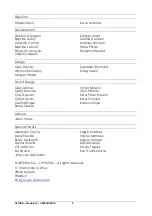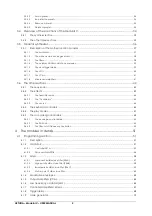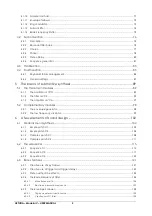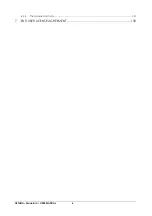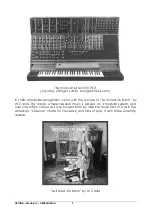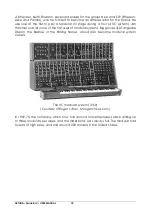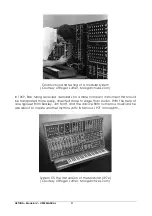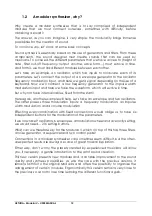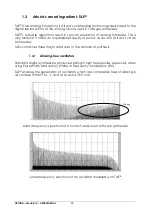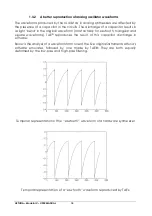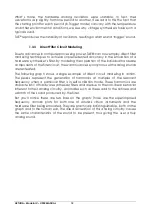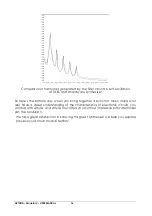
ARTURIA – Modular V – USER MANUAL
8
The first modular system by Bob Moog (1964) (Courtesy of Roger Luther,
MoogArchives.com)
Then other musicians helped Robert Moog in creating different modules:
Walter Carlos (who later became Wendy) helped for elaboration of a sequencer.
He also pushed Bob Moog to lend his name to his machines.
Vladimir Ussachevsky, who was one of the professors of de W. Carlos, specified the
4 parts of the envelope generator (ADSR), allowing the accomplishment of the
VCA and gave him the idea for the envelope follower.
Gustave Ciamaga helped with the creation of the first tension controlled low-pass
filter.
A second prototype, regrouping the all of the new modules, was built during the
summer of 1964 and was presented during the AES show (Audio Engineering
Society), where Bob Moog worked from an unused stand. This new product
generated a huge amount of interest, but he did not yet realize the commercial
punch of his machines. Two or three orders were obtained at AES and kept the
company busy for several months. In 1965, after the success at the show, Bob Moog
decided to release the 900 series for commercial sale.
The first client to buy the full modular system was choreographer Alwin Nikolais. Also
among the first users were composers Eric Siday and Chris Swansen. The first
commercial uses of the synthesizers were done in advertising. They were also used
for jingles and in recording studios.
In 1967, Bob decided to release different machines each with a certain number of
modules. This marked the birth of modular systems I, II and III. This same year, Paul
Beaver for the first time used a modular system of the brand on a record.


